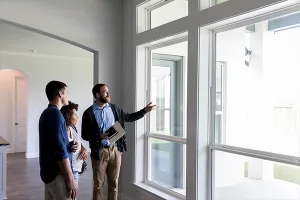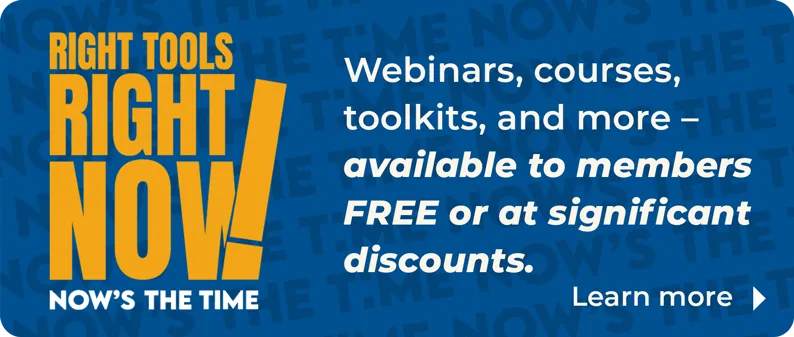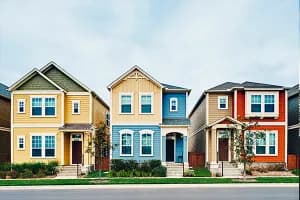A retrospective on the last four decades
To say that today’s housing market is marked by turbulence and uncertainty would be one of the great understatements of the past several years. Almost weekly, news about home prices, home sales or foreclosures add to the angst and uncertainty that many homeowners feel about their investment in real estate.
Clearly, homeowners’ confidence has been shaken by the financial crisis and severe recession, both of which hit housing directly. Although market conditions vary regionally and often from one neighborhood to the next, most homeowners have experienced some fallout whether it is from diminished home values or more severe distress associated with unemployment and foreclosure.
But, while we should focus on the future to assure that homeownership remains an achievable goal for those who choose to pursue it, looking back helps put the current situation in the proper context and allows us to see how far we must go to assure that confidence in homeownership is sustained.
Homeownership Reversal
From the mid-1980s to the early 1990s, the national homeownership rate was more or less flat at about 64 percent. Beginning in the mid-1990s, the homeownership rate rose each year, peaking at 69 percent in 2004. This remarkable rise was supported by several factors including a secular decline in mortgage interest rates that made homeownership more affordable to a larger segment of a growing population. Rates on 30-year fixed rate mortgages were in the mid-teens in the early 1980s but fell to less than 6 percent by mid-2004. This translated into a significant decline in the relative cost of housing for the typical family. For example, the monthly payment on a median priced home (assuming a 30-year fixed rate mortgage at prevailing interest rates) required more than 37 percent of the typical household income in 1981, but less than 15 percent in 2010.
Gains in homeownership were widespread across ethnic groups and income levels beginning in the mid-1990s. For example, among households below the median income, the rate of homeownership rose from less than 50 percent to nearly 53 percent, while for households with higher incomes, it rose from 80 percent to 84 percent.
Since 2004, the homeownership rate has fallen to about 66 percent, or back to the level in early 1998, with declines dispersed across different areas of the country, and among households at all income levels and demographic characteristics. To understand what is behind the decline in the homeownership rate, it is worth looking more closely at ownership levels. Upon rising to slightly less than 75 million homeowners in the mid-1990s from about 60 million in 1990, the number of owners has been relatively flat, remaining more or less at this level for the past seven years. Meanwhile, the number of renter households has climbed by more than 4 million to 38 million during this same period. Some of this shift reflects broad-based demographic trends. Many of today’s baby boomers reached their peak home-owning years, contributing less to the overall increase in ownership than they did a decade earlier. Meanwhile, younger generations, including the children and grandchildren of many baby boomers, are likely to be renters either by choice as they look to establish households or out of necessity given a weak economy.
Rising Mortgage Debt
Beyond the demographic drivers, rising distress in the market has forced some households to once again enter the rental market. Some of this distress is linked to rising mortgage debt as homeowners leveraged their real estate investment to what were then unheard of levels. The final straw was the stagnation and ultimate decline in home prices that plunged many homeowners into negative equity — a situation in which the amount owed on their home exceeded its value.
Based on data from the Federal Reserve, aggregate home mortgage debt as a percent of home value was 30 percent in 1980. In other words, homeowners collectively had a 70-percent equity stake in their home either because they had paid down their mortgage or owned their home outright. Although the relative mortgage debt burden continued to rise throughout the 1990s and into the early 2000s, it exploded starting in 2006 as mortgage debt continued to rise at the same time that home values weakened and declined in many areas. By 2010, mortgage debt accounted for 70 percent of home value, basically reversing the equity position of homeowners compared to 1980.
Declining home values magnified the mortgage debt burden for homeowners, but the volatility of home values also played a role more recently by making it more likely that homeowners would find themselves with a rising mortgage debt burden or underwater. In the 1970s, the average annual change in nominal single-family home prices was slightly less than 10 percent, driven in part by an overall environment of high inflation. At no time was there a decline in national home prices during the decade.
In fact, the lowest annual increase in home prices was 5.3 percent in 1970. Throughout the 1980s and 1990s, home prices rose each year, although the average rate of growth decreased. Entering the 2000s, home prices rose at an accelerated rate reaching 12.8 percent growth in 2005. As affordability declined and the housing crisis developed, prices decelerated and eventually fell for the first time in 2007 and declined by a record 11.9 percent in 2009. Within no decade for which home prices have been consistently recorded, have national home prices been as volatile as during the 2000s.
The combination of highly leveraged homeowners and more volatile home values resulted in an unprecedented increase in financial distress. By way of comparison, the number of mortgages in foreclosure in 1980 was less than 30,000, rising to somewhat more than 350,000 by 2000. As the stresses in the housing market increased, the number of foreclosures rose dramatically beginning in 2006 and ultimately hitting 2 million in 2010. Two states, Florida and California, account for more than one-third of these foreclosures. In 2010, there were more foreclosures in Florida than in the entire U.S. in 2000 or in any prior year at least back as far as 1980.
An Enduring Goal
Although much has changed during the past 40 years, some aspects of homeownership endure. Homeowners, and renters aspiring to be homeowners, place a high value on the intangible and non-financial benefits of owning a home. Even after a tumultuous period in the economy, homeownership still holds a unique place for many. In a recent survey conducted by NAR, majorities of both homeowners and renters agreed that owning a home contributes to a family’s long-term financial goals and provides a healthy and stable environment for raising a family. Moreover, ownership is valued since it allows families to establish roots in their community, exercise the freedom to improve their property as they see it, to more easily and readily engage in civic affairs and contribute to the vitality of their neighborhood.
However, today’s homeowners also are concerned about their children’s opportunity to own a home. In the same survey of both homeowners and renters, more than one quarter of each group felt that homeownership for the next generation would be much more difficult than it was for them, while more than half thought it would be at least somewhat more difficult. Yet, nearly three-fourths of renters and more than nine in 10 homeowners shared the view that over a period of several years it makes more sense to own a home. So while the housing market of the future may not mirror the past, it is still true that the value of homeownership remains in place as a pillar of the American experience, perhaps one of the most important lessons to be drawn from the past four decades.
Return to a Normal Housing Market
Looking back over these decades, it is clear that much of the past 10 years has been a journey through unprecedented events. What is less evident is what we should expect going forward.
There is little reason to believe that we will return to the experience of the 1970s or 1980s when home prices rose rapidly and foreclosure levels were barely noticeable. The economy, financial markets and the demographics of the population have changed too much since that time. First, baby boomers are less of a driving force in the housing market than they were 30 years ago when they were starting families and setting up households. Second, many of today’s 20- and 30-somethings are coping with a sluggish economy that may delay their home buying plans. Third, at least in the near-term, mortgage underwriting standards have become more restrictive, although the concern is that standards may have become too restrictive and buyers who would have qualified in the past may not today.
The aftermath of the financial crisis and recession will be with us for some time to come, along with challenges posed by public policy that risk making the purchase and sale of a home more daunting. More encouraging is that during the next decade experts agree that the demand for housing will strengthen as the population grows and the economy regains its dynamism. Like our fathers’ era, families of all income levels and backgrounds will continue to recognize the tangible and intangible rewards of owning a home.








